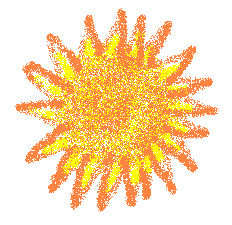


This page discusses some concepts and terminology for energy and power, especially as it relates to electricity generation and consumption, and solar power.
Energy is the ability to do work. Solar photovoltaic systems do electrical work. They produce electrons, a DC current, that can be converted to other forms of energy including AC power that can be tied into an existing electricity grid. (To cite a different but related example, wind systems convert mechanical energy to electrical energy by driving a generator when wind spins the blades of a turbine.) Power is a measure of energy flow, energy per unit time, or the rate at which energy is provided or consumed. The basic metric unit for power is Watts. Energy = power × time. The basic metric unit for energy is Joules. 1 Joule = 1 Watt-second.
Power utilities often express energy used in terms of Watt-hours, or kilowatt-hours (kWh). One Watt-hour represents 1 Watt of power supplied continuously over a time of 3600 seconds, or one hour. 1 kWh equals 3,600,000 Joules, or 3.6 megajoules. (Joules represent small amounts of energy, so energy is often expressed as kilojoules or megajoules.)
A 100 Watt lightbulb requires 100 Watts of power, and consumes an energy of 100 W-s per second = 100 Joules per second, or 100 W-h per hour = 360,000 Joules per hour. In one day, this lightbulb consumes (24 hours)•(100 W-h/hour) = 2400 W-h, or 2.4 kW-h of electrical energy. When you pay your electric bill, you pay for the number of kW-h you consume. At a rate of $0.10/kW-h, a 100W lightbulb costs $0.24/day to operate.
Now consider the amount of sunlight reaching Earth's surface. The amount of solar energy reaching a horizontal plane at Earth's surface is called insolation. Figure 1 below shows insolation from Bellaire High School, Bellaire, Texas, for 17-24 May, 2007. The weather starts as partly cloudy on the 17th and 18th, with a clear day on the 19th. Following that, there are variable clouds with rain. There were probably heavy afternoon thunderstorms on the 21st and 24th -- note the large dips in insolation in the afternoon on these days.
The units of measurement in Figure 1 are power per area, or watts per square meter. The data are record ed every minute, or every 1/60 of an hour. So, summing over 1440 minutes and dividing by 60 gives the total kW-hr of insolation per square meter for the day. Multiplying each one-second sample by 60 and summing over the day (1440 minutes) gives joules per day. These data are shown in Figure 2. It is no surprise that the clear day produces the most power and the rainy days the least. Note that in partly cloudy conditions, where sunlight reflected off the sides of passing clouds momentarily produces insolation higher than for the corresponding clear sky conditions, the power summed over the day is still less than for the clear day. The corresponding values in MJ are given in parentheses.
 |
| Figure 1. Insolation at Bellaire High School, Bellaire, Texas. |
 |
| Figure 2. kW-hr per day for data in Figure 1. |